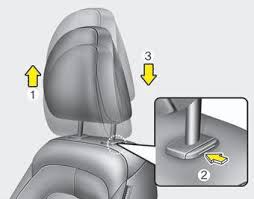Can I remove a vehicles headrest to accomodate an install?

That’s a great question and a loaded topic! This article will discuss some warnings about headrests so please ensure you read the entire article and like always, if you have any questions – since you’re an ACRI member, just give us a call!
Managing the clients expectation, and your reasons for making these types of decisions, is crucial in these scenarios. Discuss your intentions, and reasoning behind your decisions prior to performing the installation – and include them to ensure they are satisfied with your recommendations, as ultimately it is their responsibility as drivers to ensure they are comfortable with the way their child is traveling.
Although we misleadingly in society call a vehicles seat a “head rest” it is actually a type of “restraint”, a safety device and a part of the vehicles compliance! In newer vehicles, those forward tilting “head rests” are actually “Active Head Restraints”. This means they are designed with the geometry of the seat involved, to help mitigate or remove the risk of cervical damage and whiplash injury, by reducing the distance and velocity of the heads rearward movement.
Best Practice: In short, the vehicle’s headrest should not be removed as in some cases this may result in the vehicle being classed unroadworthy.
Some Cases: In some real world scenarios however, issues can arise that result in the vehicles headrest impeding on the safe travel aspect of an install (ie. The headrest obstructing the pathway to an anchor point located on the roof). In these cases it is at the discretion of the technician to determine the safest travel configuration.
Warnings:
- Can I turn the vehicle’s headrest around instead? See this article here – Warning: You may irrepairably damage the seat or headrest – or both.
- A tether strap should be contained from slipping down any split or semi split seat backs, in this case the headrest can assist.
- Some type G and booster integrations will require the vehicle’s head restraint for it to operate safely. Ensure the owner is aware.
- You do not have to install a restraint if you have any doubts to the safety of the integration into a vehicle or it’s safe daily use – in fact you should not install!
- This document obviously does not apply to a child safety seat’s headrest. This is a different type and is directly provides important side impact protection.
More Information: For more information click here to be taken to the Fact Sheet written by Rob Newman
NB: This site contains information intended only for the person on the ACRI membership list and is subject to legal privilege. Any duplication or copy, even in segments, infringes on copyright

